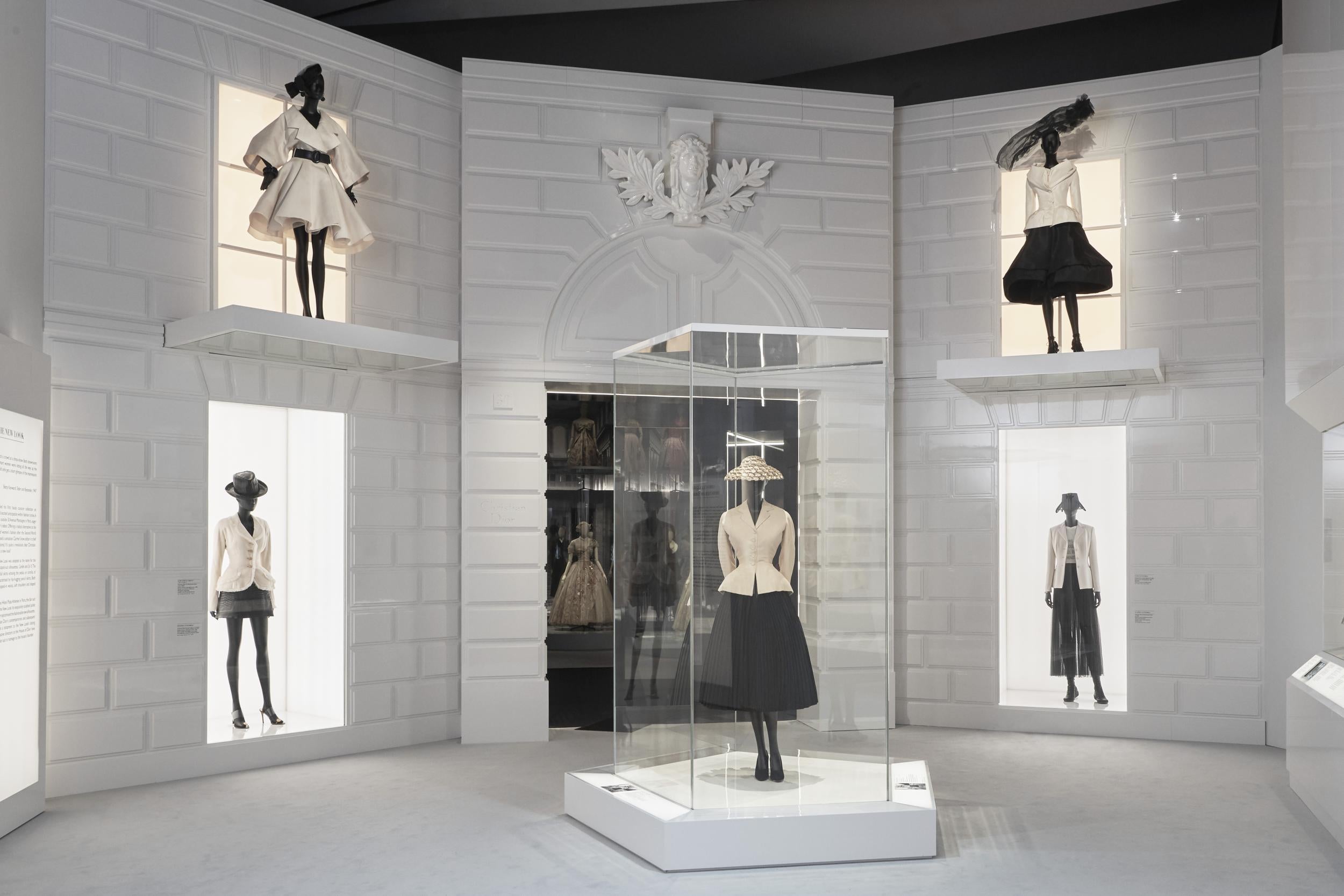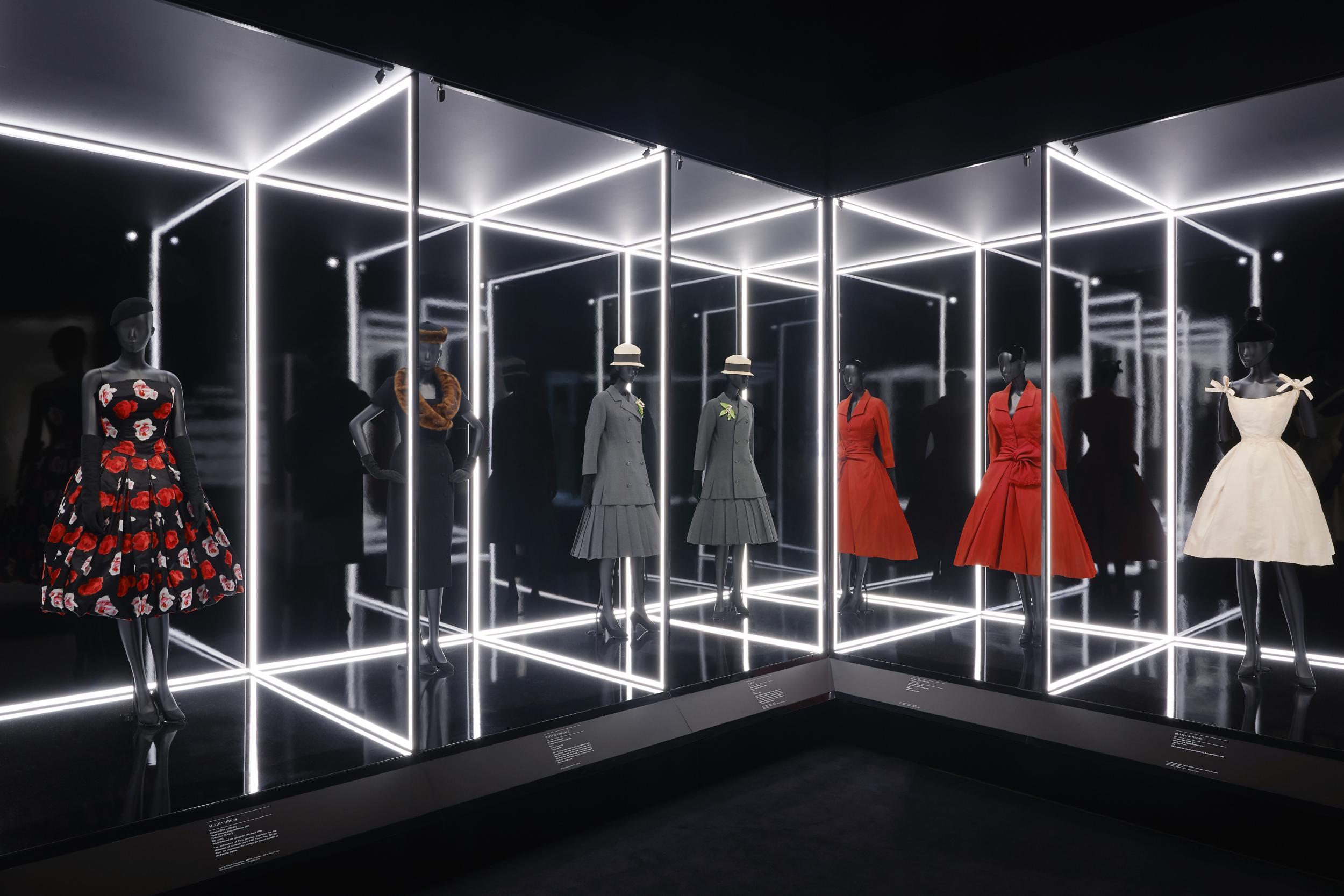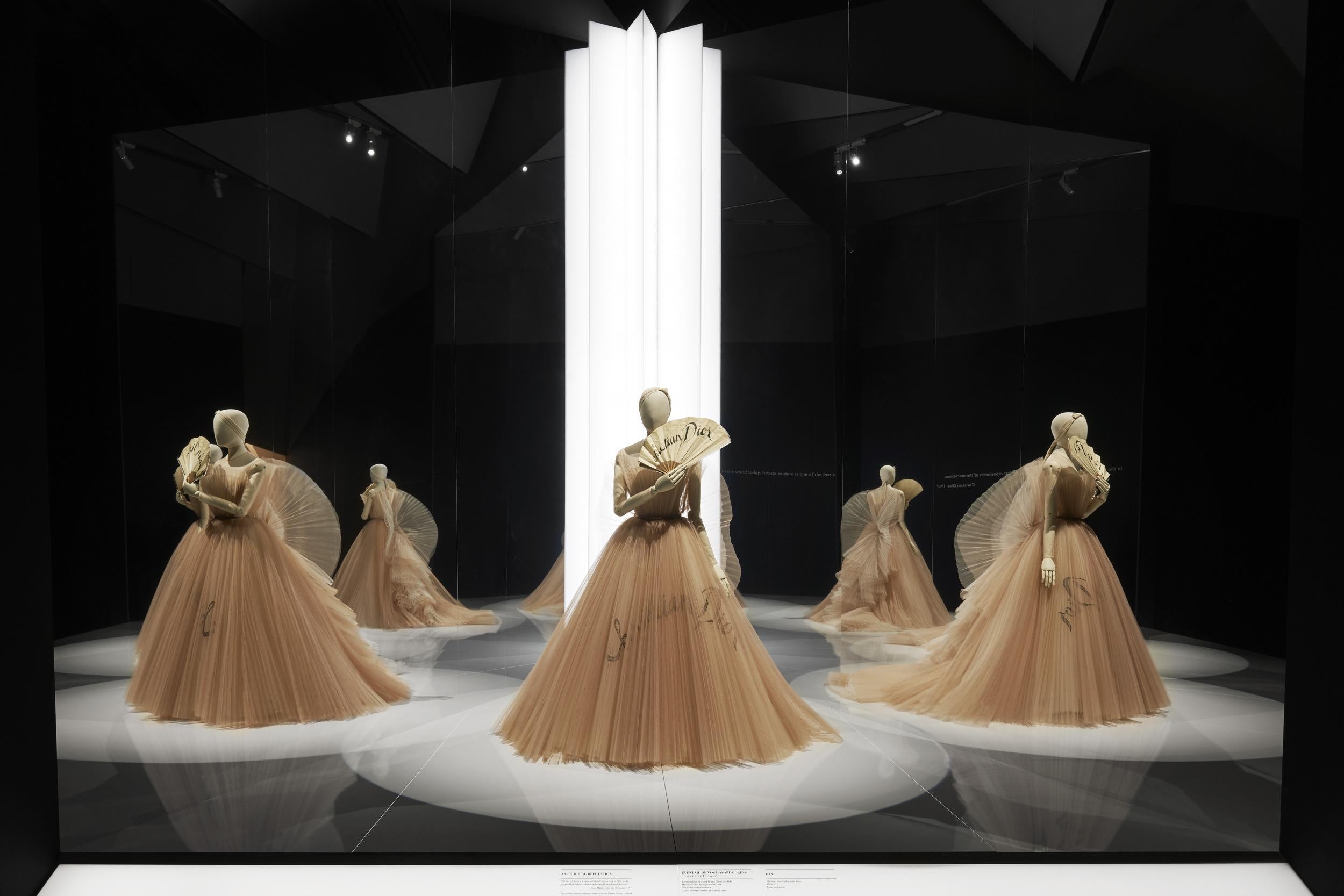Dior at the V&A review: Breathtaking retrospective that at times does not tell the whole story
The biggest-ever retrospective of the House of Dior’s oeuvre comes to the Victoria and Albert Museum this week, says Harriet Hall
Your support helps us to tell the story
From reproductive rights to climate change to Big Tech, The Independent is on the ground when the story is developing. Whether it's investigating the financials of Elon Musk's pro-Trump PAC or producing our latest documentary, 'The A Word', which shines a light on the American women fighting for reproductive rights, we know how important it is to parse out the facts from the messaging.
At such a critical moment in US history, we need reporters on the ground. Your donation allows us to keep sending journalists to speak to both sides of the story.
The Independent is trusted by Americans across the entire political spectrum. And unlike many other quality news outlets, we choose not to lock Americans out of our reporting and analysis with paywalls. We believe quality journalism should be available to everyone, paid for by those who can afford it.
Your support makes all the difference.When Christian Dior presented his debut collection – the Corolle line of 1947 – a group of women picketed in the streets of Chicago, bearing banners that read: “Mr Dior, we abhor dresses to the floor.” The following year in Paris, a woman’s skirt was torn from her body by dissenters, so appalled were they by the garment.
The offending ensemble was the Bar Suit, adoringly dubbed the New Look by the fashion press. With its nipped-in waist and voluminous skirt that fell to the ankles in 20 yards of pleated fabric; this was a radical departure from the staid wartime styles that had been defined by strict fabric rationing. In one outfit, Dior had shaken off the boxy cobwebs in a celebration of femininity that appeared – to some – to reshackle women as decorative, immobile ornaments.
This, and Dior’s later work, would define the silhouette of the 1950s. He became one of fashion’s most pre-eminent designers, shaking off Italian and American competition and allowing Paris to reclaim the throne as the world's fashion capital.

It is this – the archetypal Dior ensemble - which first greets visitors arriving at the Victoria and Albert Museum’s Dior retrospective, Christian Dior: Designer of Dreams. The show is the biggest-ever display of the fashion house’s work to be shown in the UK and opens to the public this week.
A reimagining of last year’s blockbuster show at Paris’ Musée des Arts Décoratifs that celebrated 70 years of the house, Designer of Dreams is a sheer celebration of an artist; a display that languishes in the romantic femininity that Dior and his successors have championed. From room to room visitors are confronted with a visual banquet of over 500 items (including 200 rare haute couture garments). And yet, through the exhibition’s undeniably beauty, there is a paucity of cultural context.
With a similar feeling to its predecessor, Alexander McQueen: Savage Beauty, (which attracted 493,043 visitors through the museum’s doors), the wow-factor of Designer of Dreams can be found in the near-immersive sets designed by Nathalie Crinere. Descending a black lacquered staircase into the new subterranean Sainsbury Gallery, visitors arrive at the façade of Dior’s first store at 30 Avenue Montaigne, before being transported through Blenheim Palace during the Belle Époque, replete with white columns and tiled floor, Dior’s family garden in Normandy with paper cut-out wisteria hanging from the ceiling (expect this to dominate your Instagram feed in no time) and even into the atelier, with toiles stacked floor-to-ceiling.

That a room of white calico patterns showing designs stripped to their bare bones is one of the most striking of the exhibition, speaks to the power of the Dior figure. But it is the crescendo of the ballroom gallery, which will have fans of celebirties lining up at the door. Displayed in all their red carpet glitz are gowns worn by the likes of Jennifer Lawrence, Nicole Kidman, Lupita Nyong’o and Rihanna.
What sets the V&A’s retrospective apart from the Paris original, in particular, is a gallery dedicated to Dior as anglophile. “There is no other country in the world, besides my own, whose way of life I like so much,” Dior once said. “I love English traditions, English politeness, English architecture. I even love English cooking.” Taking centre stage here is the ivory embellished off-shoulder gown the couturier designed for Princess Margaret’s 21st birthday photograph by Cecil Beaton.

The work of each of the six creative directors that the House has seen since Dior’s decade-long tenure is displayed with equal weighting, their gowns comfortably cohabiting with Dior originals and in most rooms and separated in one, that demonstrates their personal interpretation of the master’s aesthetic. There sits Yves Saint Laurent’s bold trapeze lines, Marc Bohan’s demure dresses, Gianfranco Ferré’s ostentatious frocks, John Galliano’s theatrical pieces, Raf Simons’ minimalism and Maria Grazia Chiuri’s feminist reinvention.
“The influence of Christian Dior’s design was all-pervasive and helped to define an era,” says curator Oriole Cullen. ”In their own individual ways, each of the House’s successive artistic directors have references and reinterpreted Dior’s own designs and continued the legacy of the founder, ensuring that the House of Christian Dior is at the forefront of fashion today.”
This is an exhibition that centres unashamedly upon design, giving way to nothing that could steal the limelight. Yet, without the socio-political context of the styles and with sparse runway footage and supporting material, it feels as though a piece of this dazzling puzzle is missing. And for a design house not without its controversies, it feels somewhat of a sugarcoating of context.

The story of disgraced creative director, Galliano, is a noticeable absence. Removed from his post in 2011 following an anti-Semitic rant in a Paris café, Galliano’s designs are revered here, but his personal history is blotted out. His referencing of the Native American, Ancient Egyptian, Japanese and Chinese dress is also displayed proudly, with just a swift mention of cultural appropriation slipped into a label beside. Meanwhile Simons’ departure from the House after just three and a half years - which he put down to increasing commercial demands and an unmanageable collections schedule - is also absent.
For steadfast lovers of Dior, this is an exhibition offering the chance to see a breathtaking array of gowns in stunning ethereal settings that allow for careful observation of the handstitched structure of couture. For newcomers, a paucity of historical context denies a full education in the true significance of this fashion powerhouse.
Christian Dior: Designer of Dreams runs from 2 February to 14 July 2019. Buy tickets here

Join our commenting forum
Join thought-provoking conversations, follow other Independent readers and see their replies
Comments